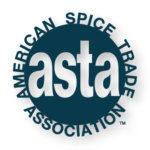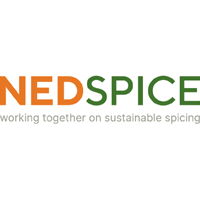Identification and Prevention of Adulteration Guidance Document – Adulteration is one of the major concerns of the spice industry and this guidance document provides a tool for companies to identify circumstances when adulteration may occur and then take steps to prevent it.
Clean, Safe, Spices Guidance Document – ASTA’s Clean, Safe Spice Guidance has been updated. The 2017 version adds references to the Food Safety Modernization Act (FSMA) and updated information related to FDA’s Reportable Food Registry. It also contains the latest information on research into the identification of surrogates for the validation of microbial reduction techniques.
Cleanliness Specifications – ASTA’s Cleanliness Specifications were developed to ensure that the spices meet federal regulatory requirements for safety and cleanliness. They were designed to meet or exceed the U.S. Food and Drug Administration’s Defect Action Levels.
Good Agricultural Practices Guide (GAP Guide) – The original Good Agricultural Practices Guide was developed as a joint project by members of the International Organization of Spice Trade Associations (IOSTA). The ASTA Guide is based on that document, updated in 2016 to reflect U.S. regulations and issues specific to exporting to the U.S. Use of this GAP Guide will assist those in the spice supply chain in understanding their responsibilities to provide clean, safe spice to consumers.
Good Manufacturing Practice (GMP) Guide for Spices – Spices are dried plant products used to enhance the flavor of foods. Their safety and wholesomeness are of utmost concern to the spice industry, their customers, consumers, and regulators. As with any agricultural product, safety, quality, and consistency of a spice product may be compromised by one or all of the many processes it undergoes between the farm and table. The American Spice Trade Association (ASTA) has sponsored many programs to assist its members in assuring that spices sold to food processors and consumers are safe and wholesome. This guide focuses specifically on the spice manufacturing environment, and combines recommendations and best practices from ASTA member companies.
Guide for Hazard Analysis and Risk-Based Preventive Controls for Spices & Seasonings – ASTA’s “Guide for Hazard Analysis and Risk-Based Preventive Controls for Spices & Seasonings” is intended to provide members with a tool to guide the development of a hazard analysis and resulting risk-based controls consistent with regulations under FDA’s Food Safety Modernization Act (FSMA), including how to leverage HACCP (Hazard Analysis Critical Control Points) resources within the preventive controls framework. HACCP is an analytical tool that enables management to introduce and maintain a cost-effective, ongoing food safety program. The ASTA HACCP Guide to Spices and Seasonings has been updated to reflect contemporary preventive controls concepts to ensure food safety.
Principles of Physical Cleaning Guide – Principles of Physical Cleaning of Spices – This ASTA guide provides an overview of equipment that can be used for the physical cleaning of spices. It is intended to be used with other ASTA guidance to ensure the production of clean, safe spice for consumers.
Environmental Monitoring – Environmental monitoring is an essential activity to prevent microbial contamination. It provides insight into a facility’s microbiological profile as well as a verification of the effectiveness of a facility’s overall sanitation and microbial control programs.
If you have any questions, please do not hesitate to contact the staff for assistance at [email protected].





